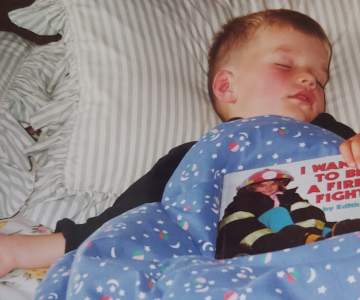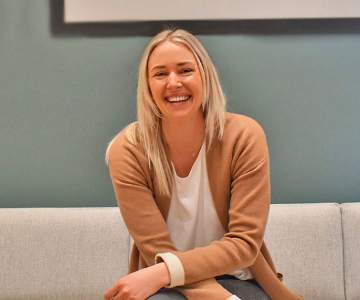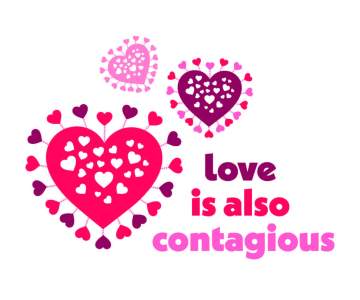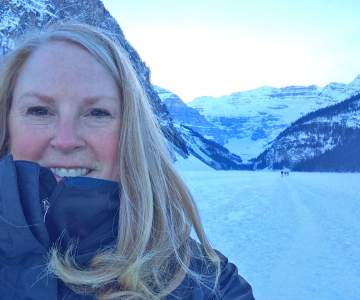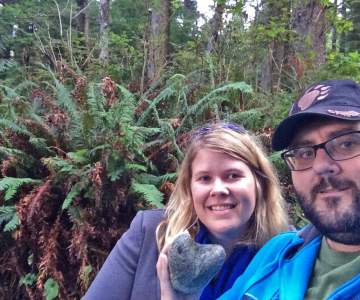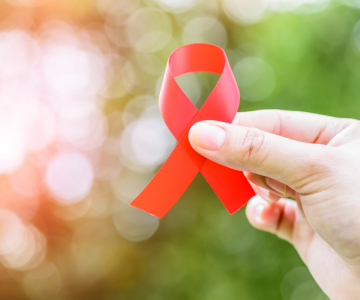Breadcrumb
Explore Stories
Health & Wellness
When people feel comfortable in a space, they are more likely to visit.
With this in mind, the Aboriginal Mental Wellness team has been looking at ways to make spaces that provide mental health and substance use services more welcoming and culturally safe.
Conversations with Aboriginal partners, clients, families, and care providers have shown us there are a number of ways we can create welcoming spaces and improve the quality of care for Aboriginal people.
Physically welcoming spaces
Warm lighting (less use of fluorescent)
Comfortable seating
Private spaces (especially when located with other services)
Using natural elements to soften spaces
The need for spaces to be seen as healing rather than medical or clinical
Having a recognized space for cultural/ traditional practices
Emotionally welcoming spaces
Welcome signs, general signage, and waiting room resources in the language(s) of the Aboriginal people in the area
Acknowledgement of the traditional territory of the local First Nations
Acknowledgement of Métis and Inuit peoples accessing the space
Aboriginal clients and families able to see themselves and their Nations represented in the environment through art and other culturally relevant items
A map of the area showing First Nations and Métis Nation BC Chartered Communities
A friendly reception and help finding your way
Welcoming spaces that recognize our relationship with Aboriginal people
Spaces should reflect the holistic Aboriginal worldview
Art and knowledge on the walls that represents the distinct Aboriginal communities in area
Show the interconnected nature of Aboriginal cultures
Post the official commitments made to Aboriginal partners
Prior to deciding where to locate services, be conscious of associations Aboriginal people may have with other organizations in the building
Spiritually welcoming spaces
Provide opportunities for clients and families to practice cultural ceremonies
Hosting culturally safe ceremonies, circles, and land-based teachings with Aboriginal partners
Access to traditional healers and elders
Access to sacred spaces
All Interior Health staff receive cultural safety training which includes education about the history of colonization in Canada and the negative impact this history has on the health and wellness of Aboriginal peoples.
For community health facilitator Cathy Collinge, this training led to a curiosity about how she could make her workplace (Lansdowne Centre in Kamloops) culturally safe and welcoming.
Cathy and her colleagues started by creating an advisory committee with the support of their Aboriginal mental wellness team. They invited members of the Secwépemc Nation, surrounding Nations, people accessing services at Lansdowne Centre, Elders and Knowledge Keepers to join.
Since its inception, the committee has made a number of recommendations for creating welcoming and safe spaces and services. Many of their recommendations have been implemented through a grant received from the Royal Inland Hospital Foundation.
A mural was completed at Community MHSU Lansdowne Centre in November.
Spelq̓wéqs
Pronounced “spell-kwaks”, Spelq̓wéqs is the Secwepemctsin name for turtle
“For me, turtles represent longevity, patience, nurturing, and wisdom,” says artist Chris Bose. “In this mural, I have the mother turtle swimming with two baby turtles through an ocean of life and hope and promise."
The work to create welcoming spaces continues to evolve. The advisory committee recently recommended surveying Kamloops staff and physicians working in mental health and substance use to determine areas of interest for learning.
Learning about Aboriginal cultures and reflecting those learnings in the places where care is offered can create positive change. “Culture is healing and an integral part of our health and well-being,” says Métis Elder Gwen Campbell McArthur, Kamloops advisory committee member.
“The mental health professional has a degree, but that does not make them the expert, in fact, the person seeking treatment is the expert on themselves. When someone seeks services, they do not come alone. They come as part of a family, a community and indeed a nation.”
Are you interested in learning more? Check out the Interior Voices podcast.
Health & Wellness
Hospitals across B.C. are displaying white trees this year. On them, you'll see ornaments and photos of people of all ages. These ornaments might remind you of your own family mementos. The difference is the people in these photos are no longer with us. Their lives were lost to overdose.
Moms Stop the Harm is a networking group of people who want to raise awareness and stop overdose deaths. Member Jill Marten's son Daniel is pictured above.
"I think the ornament that shows him as a child is very powerful, with him holding his I want to be a Fireman book," says Jill. "I want to remind people that no one grows up wanting to use substances".
One of the topics the group advocates for is an end to the stigma associated with drug use. Treating people who use substances with respect has been shown to improve health outcomes and save lives.
To learn more about the role of stigma in overdose and how you can make a difference, read Rachel's story.
The trees will be on display in many B.C. hospitals during the holidays.
"It has been a beautiful labour of love," says Jill.
Community & Culture
We are IH is a recognition campaign to spotlight Interior Health employees and medical staff – through pictures and stories.
Name: Lauren Hristoski
Worksite: Kelowna Community Health Centre
Years of Service: 5
Job Title: Manager of Career Marketing, Human Resources
Lauren radiates the workplace with positive energy as her welcoming demeanour makes people feel supported. As a hard worker who is determined to make impactful change, she has paved her own career path at Interior Health. Working in Human Resources for many years, Lauren has been given the opportunity to grow career marketing initiatives through a newly developed department, Career Marketing. Lauren brings crucial knowledge of Interior Health and career marketing to her new role that provides instrumental value to the organization.
Over the past year, the team has grown significantly to provide marketing support to employee and medical staff recruitment, employee experience, and recently the pandemic response. As an adaptable and innovative individual, Lauren has led work throughout the pandemic to ensure her team has had a smooth transition to a virtual work environment. Lauren’s love of people and passion for uplifting people has supported the growth of employee initiatives including We Are IH.
Her commitment to sharing authentic stories, promoting Interior Health as an employer, and showcasing diversity and inclusion has significantly assisted in sharing our brand story. With Lauren’s out-of-the-box creative thinking, she showcased our award of becoming a B.C. Top 100 Employer by creating a video of our people to celebrate our story. Lauren feels so fortunate to be part of supportive teams that work collaboratively together to achieve their goals.
Born in Edmonton, Lauren grew up very close with her family including her parents, sister, and brother. Graduating from French immersion high school with a bilingual degree, she furthered her passion for health by graduating with a Bachelor of Kinesiology from the University of Calgary. After living most of her life in Calgary, Lauren relocated her family to the Okanagan to live an exciting and active four-season lifestyle.
In the summer you can find Lauren and her family standup paddleboarding, hiking, biking, playing games, and exploring all there is to offer in beautiful British Columbia. Over the winter season, she spends her time with her family up at Big White hitting the slopes and sipping on hot cocoa. Lauren’s two little girls also possess her bright smile, kind demeanour, intelligence, and adventurous spirit. As food lovers, her kids are often sous chefs in the kitchen and share Lauren’s passion for experiencing delicious food and cuisines. Lauren is looking forward to travelling again and being able to experience more of the world through her daughters' eyes.
Check back each Friday for the next We Are IH feature.
For more information contact EmployeeExperience@InteriorHealth.ca.
Lauren's nomination of Jenn Goodwin keeps the We Are IH loop going:
As a leader in the organization, Jenn is always looking for opportunities to grow and support teams. She always has a smile on her face walking down the hall and takes time to say "Hello" and ask simple questions that brightens your day.
Community & Culture
It's no secret that the pandemic has taken a big toll on the morale of health-care workers.
During the early weeks of COVID-19, staff and physicians at Kootenay Lake Hospital in Nelson were really feeling the pressure of the changes to their daily practice. The usually friendly and cooperative team was dealing with a sense of fear and uncertainty about what lay ahead.
During an online education session designed to support physicians, Dr. Linda Johannson, an emergency physician at the hospital started to explore the topic of how anxiety and fearful attitudes at work can be contagious. The group also discussed how the reverse is also true, and positive attitudes can be contagious. After all, it only takes one person to get things started.
That’s when the idea for “Love is also contagious” was born.
"I approached Marian Lowe, a gifted graphic designer and friend, and asked her to take a cartoon coronavirus image and morph it into a heart, for a more friendly virus image than the scary ones all over the news and our internal communication," says Dr. Johannson. "It's a visual cue to everyone who works here, that we can have a positive influence on those around us."
To help spread the visual reminder, stickers and buttons were created, along with a downloadable window sign. “When I have time at night or in the early morning, I’ll fill up a little bag with pins and stickers and go around the hospital to “spread love.” People seem to really appreciate the message and the visual reminders to take a minute and reset if they are getting stressed on a shift.”
Community & Culture
We are IH is a recognition campaign to spotlight Interior Health employees and medical staff – through pictures and stories.
Name: Hilary Beck
Worksite: Polson Annex, Vernon, B.C.
Years of Service: 1
Job Title: Occupational Health Nurse
As an Occupational Health Nurse at Interior Health, Hilary Beck brings to the unique position a wealth of knowledge from her two degrees, two certifications and her extensive work experience of over 20 years in the health field.
Born in Vernon on the Syilx Nation/Okanagan territory, Hilary has recently returned home closer to her family in Vernon after living in Calgary, Alta., for the past 20 years. We are so fortunate that Hilary has chosen Interior Health to further her career.
With a desire to start a career where she could make a difference in people's lives, Hilary moved to Vancouver and enrolled in her first degree, a Bachelor of Science in Kinesiology at Simon Fraser University.
Since graduating in 1997, Hilary’s passion for continuous learning has led her to become a perpetual student. As someone who loves school and is always looking for a new challenge, she enrolled in her Masters of Nursing at Athabasca University, where she will graduate in 2022 with even more knowledge to open doors and opportunities at Interior Health.
Hilary’s passion to further her education continued as she received her Advanced Certificate in Athletic Therapy from Mount Royal University in 2000. She landed a job as an athletic therapist with the Men's National Disabled Standing and Sitting Volleyball teams, where she was able to see the world as she worked and travelled with them for 10 years.
A highlight was the Standing Team winning the World Championships and the World Cup for three consecutive years from 2004-2006. In 2011, Hilary was granted the opportunity to be part of the delegation that attended the Para Pan Am Games in Guadalajara, working with para athletes from other sports. These were truly amazing experiences that Hilary cherishes.
When she wasn’t tending to the team or working her full time jobs, she was likely found at the hockey arena, working as an athletic therapist for junior hockey in Alberta. As a former athlete in many sports, primarily volleyball and soccer, Hilary was able to relate to her clients and provide a beneficial perspective. Her own injuries forced her to retire from those activities as she had a high tibial osteotomy. She now spends her time cycling, fishing or at her summer cabin on Okanagan Lake.
Working one-on-one helping athletes inspired Hilary to further her education with an additional degree in nursing, where she could apply her education to helping others even more. After graduating from the University of Calgary with her Bachelor of Nursing in 2011, she decided to add another certification to her resume.
Shortly thereafter, she obtained her Certificate in Occupational Health Nursing from Grant MacEwan University in 2015. The combination of her exceptional work experience and advanced education has played a vital role in her successful career where she has bettered the lives of so many.
Hilary Beck's graduation from University of Calgary
As a Vancouver Canucks fan, it’s been a bit challenging living in Calgary for the past 20 years surrounded by Calgary Flames fans. Hilary is grateful to be back in Vernon closer to her family, especially her two nieces and of course her fellow Canucks fans. When it’s safe to do so, Hilary is excited to attend sporting events, live concerts and travel somewhere with palm trees! Thank you for all that you do, Hilary, we appreciate you very much!
Arizona, U.S.A.
Check back each Friday for the next We Are IH feature.
For more information contact EmployeeExperience@InteriorHealth.ca.
Hilary's nomination of Carla Davies keeps the We Are IH loop going:
When I first started Carla was super helpful and very welcoming, and she has supported my transition into this role in a way, that I can not express my thanks to her enough. Carla was recently promoted to WHS Safety Advisor from a Service Partner Role, which also shows the great work she does.
Health & Wellness
Did you know that not all disAbilities are visible?
Mental illness, chronic pain or fatigue, sight or hearing impairments, diabetes, brain injuries, neurological disorders, learning differences and cognitive dysfunctions, are a few examples of invisible disAbilities.
Having a disAbility doesn't prevent me from going to university or competing for any type of job that I am qualified to do. Improved accessibility in the workplace gives me the freedom to live my life without stigma so I can contribute to society and support my family.
But I am also aware that many other people have not shared my experience.
Growing up in the era I did, people with disAbilities experienced segregation in schools, some were institutionalized, while others were prevented from having a family.
I have witnessed many positive changes toward how people with disAbilities are treated and included in society.
It is essential that we continue this work and focus on removing barriers for all people living with disability, both visible and invisible.
Want to learn more? Dec. 3, 2020 is the International Day of People with Disabilities.
Research & Innovation
An AIDS-free generation in B.C. is an ambitious goal, but it is also in sight.
Since launching the My Health Is Sexy campaign on World AIDS Day in 2016, Interior Health’s new testing strategies have resulted in earlier diagnoses and more effective connections to health care, prolonging and improving peoples' lives; and reducing HIV transmission.
As part a provincial initiative to expand access to earlier HIV testing and provide support for individuals to start and sustain HIV medication, the My Health is Sexy campaign promotes testing, engagement and treatment.
And it’s working.
Today, people living with HIV and receiving treatment can expect to live long, healthy lives free of symptoms. In fact, research has shown that early diagnosis of the disease in combination with antiretroviral therapy means HIV-positive people can expect to live as long as those without HIV.
Further, when people are consistently taking HIV medications, their viral load drops to an undetectable level, protecting their health by preventing progression to AIDS and AIDS-related premature deaths and stopping transmission of the virus to someone else.
This not only improves health outcomes, but making testing and treatment readily available to everyone also builds health equity. It reduces the stigma around HIV/AIDS, and builds dignity and respect. To ensure people get the treatment they need, testing is essential. But access to testing can be affected by a person’s location, the amount of stigma they experience from health-care providers, and even their own fear of getting a test.
That's why people living in B.C.'s interior have the option of:
On Demand Testing, where people can choose to go to partner labs and request a test without a health providers’ requisition
Get Checked Online, an online screening tool (delivered in partnership with the BC Center for Disease Control) that provides people with a blood requisition order they can take to any lab
Testing events throughout the year
A toll-free number for connection with a health outreach nurse
These services work alongside access to testing through primary-care providers, clinics and hospitals. In addition access to HIV pre-exposure prophylaxis (PrEP) and postexposure prophylaxis (PEP) have been expanded, which are critical to curbing the fight against HIV/AIDS. These have led to a consistent decline in new HIV cases across B.C.
In December 2018, Interior Health launched Emergency Department HIV Testing, a second key program to increase earlier diagnosis and treatment. When patients are admitted to emergency departments and require diagnostic blood work, an HIV test may be included.
"I have personally treated patients who were unaware they were HIV positive and who may have never thought to get tested, that were diagnosed through testing in the emergency department.”
Dr. Michael Murphy, medical coordinator for the STOP HIV/AIDS program, Interior Health
Testing is just the first step in a patient’s journey of living with HIV. Once an individual is diagnosed, they can receive treatment that supports them in living long, healthy lives. As of June 2020, the number of patients who, once diagnosed, remain linked to care, which means they see a nurse of doctor regularly, is at 90 per cent; more than 80 per cent of patients are receiving care and being treated with antiretrovirals; and nearly 50 per cent of people living with HIV currently have an undetectable viral load, which means they are unable to transmit the virus.
While these numbers are encouraging, the work is far from over. Through the STOP HIV/AIDS initiative, the My Health is Sexy campaign, and the ED HIV Testing program, we are working towards an end to the HIV epidemic.
Community & Culture
We are IH is a recognition campaign to spotlight Interior Health employees and medical staff – through pictures and stories.
Name: Ryan Lazauskas
Worksite: Kelowna Community Health Centre
Years of Service: 3
Job Title: Employee Relations Consultant
An adventurer at heart, growing up in the beautiful community of Kelowna in the Okanagan, Ryan has explored most trails on his road bike. His passion for exploring led him to travel abroad where he backpacked his way through over a dozen countries throughout Western Europe before starting his career.
Ryan traveling abroad in London, England.
Motivated to grow professionally, he embarked on his Bachelor of Business Administration with a major in Human Resources Management from Okanagan College at the Kelowna campus, where he learned valuable skills that have propelled his career forward. His work experience with non-profits and the private sector gave him the knowledge, skill set, and experience to land a job at Interior Health as a Service Partner for the Benefits Department.
Over the past three years at Interior Health, Ryan is proud of the way he has been able to learn, grow, and adapt continuously. As a motivated employee, Ryan has been rewarded for his hard work with multiple new positions. He was awarded a new position in Recruitment and then he gained experience with Labour Relations, allowing him the opportunity to take on the role as a Labour Relations Service Partner.
His love for helping others shines through in his work, granting him the recent role as an Employee Relations Consultant. His passion for serving others has helped him further exceed at Interior Health. As a results-orientated individual, Ryan is focused on getting the job done in the best way possible while providing excellent service.
Ryan’s hard work continued to pay off in his personal life, as he recently purchased his first home in the Central Okanagan with his girlfriend. They expanded their family with their French Bulldog, Frankie, who has quickly become the centre of their world as they adventure the outdoors together.
Ryan's French Bulldog, Frankie
Ryan's girlfriend and French Bulldog
This year may have travel restrictions, but when it is safe Ryan will continue his goal of traveling across the incredible province of British Columbia to further explore the outdoors of what B.C. has to offer! His love for his friends and family brings him so much joy, so he is looking forward to spending more quality time with his loved ones once it’s safe to do so.
A great perk of living in the beautiful Okanagan is having Big White close by! Ryan plans to spend lots of time on the slopes this winter season exploring the mountains. Thank you for all that you do, Ryan! We appreciate you very much.
Ryan Lazauskas in Switzerland
Check back each Friday for the next We Are IH feature.
For more information contact EmployeeExperience@InteriorHealth.ca.
Ryan's nomination of Katherine Semenoff keeps the We Are IH loop going:
Katherine has been an amazing colleague and big support for our team. She has been with Interior Health a long time. She is dedicated, driven and always looking to help you no matter what.
Research & Innovation
Interior Health, located within British Columbia’s interior, had just completed bringing the Vocera communications platform to its acute hospitals and long-term care homes when the COVID-19 pandemic struck with full force in March of this year.
It was excellent timing, as the technology enables staff and clinicians to instantly call each other by using handsfree badges, even when wearing personal protective equipment. The user can touch a button on the badge and simply say call Dr. John Smith, and he or she will be quickly connected.
Users can even find a person by role. For example, you can ask for the on-call cardiologist, and the system will find the person on its own. That was a big help when it came to managing patients and keeping staff free from infection.
“When COVID hit, we had to respond quickly,” said Andrew Povah, Manager of Mobility and Conferencing Services at Interior Health, who spoke at a webinar on real-time communication systems in health care, in October. “We let the staff know that communications would be essential.”
Interior Health serves a population of 801,000 in British Columbia and comprises numerous hospitals and long-term care homes, 44 of which utilize Vocera. It has an annual operating budget of $2.6 billion.
During his webinar presentation, Povah gave specific examples of how the Vocera platform has helped staff and clinicians with patient care in the time of COVID. He discussed the case of the region’s Princeton General Hospital, a community facility just outside Penticton, BC. While the centre is well-equipped for acute care and has an emergency department and its own lab, it didn’t have isolation rooms for patients infected with COVID-19.
The staff at Princeton General improvised and quickly created an isolation room, but it lacked windows, telephony and intercoms. “So, facilitating effective communication in this room was a huge challenge,” said Povah. Phones or intercoms to communicate with patients could have been installed, but it would have taken a fair amount of time. “When you’re cabling and you’ve got contractors coming in, it’s not a matter of days that you need, it’s weeks,” Povah noted. He said that since the facility was already using Vocera, the I.T. staff asked why they hadn’t extended it into the isolation room. It turned out that clinicians were using highly
plasticized, protective gowns, and the heavy PPE generated noise that made it hard to work with the Vocera badges, especially when used underneath the gowns.
A solution was found in wearing the badges outside the gowns and using a special protocol for cleaning the devices afterwards. Soon, it was found that clinicians could continue wearing the badges under their gowns by retraining the Vocera system to understand their muffled voices. As well, a badge was installed in the room using the auto-answer feature, so that it acted as a wireless intercom. “It meant we didn’t have to take badges in and out of the room anymore,” said Povah. Instead, staff outside the room could converse with clinicians who had entered, as well as with the patient.
“This was a very successful implementation, and we took the learnings and used them at our other sites in British Columbia,” said Povah.
Meanwhile, at the Kelowna General Hospital, a large tertiary facility, Povah said there was significant demand from clinicians who wanted streamlined communications. The strategy was to increase the number of devices being used by clinicians, such as in the emergency department. “This greatly improved their ability to communicate about the flow of patients in the ER,” said Povah.
Another group that hadn’t previously been onboarded were the respiratory therapists. With COVID-19 being a respiratory disease, their services were crucial. “This deployment was extremely helpful,” said Povah. He noted that the platform was also useful to security personnel and those controlling the entrances and exits of the hospital.
The purpose here was to assess visitors and determine whether they could come in. These staff members quickly found that they had a need to communicate amongst themselves. “Being a large facility with multiple entrances and exits, staff wanted to communicate about personnel levels and resource requirements – and to communicate about visitors who may have been prevented from entering, due to COVID-19 restrictions, at one entrance by trying to enter through another.”
Using the backend programming of the Vocera system, role-based communications were deployed and became important. This occurred in logistics and was helpful in replenishing PPE. As there were constraints in the supply of PPE, the wards were being stocked on an as-needed basis. “That meant when you needed top-ups, you needed them very quickly,” said Povah. “That role was very effective in getting the PPE to the right place and the right time.”
Another important role, and perhaps an unexpected one, was elevator cleaning. “After a patient transfer, we had to clean the elevator and communicate that it had been completed to ensure the safety of our staff and patients,” he said. “Vocera played a key role there.”
At Noric House, a long-term care home in Vernon, B.C., visits to the facility were limited, and at times were completely prohibited. However, the facility used the Vocera system to connect patients to visitors – outside their windows – by deploying a Vocera badge in the room of the patient. As with the Princeton General Hospital, the badge was set to auto-answer, so the patient didn’t have to manually operate the device. Visitors outside could be connected, even using their own cell phones, and they could communicate with their loved ones inside. “It bridged the communication gap while we weren’t allowing visitors inside,” said Povah.
“The quicker a message gets through to a nurse or other healthcare professional, the more likely there will be a good outcome,” said Dr. Kanter, Chief Medical Information Officer, Vocera
Dr. Ben Kanter, chief medical information officer at Vocera, asserted that an integrated communication system is essential for hospitals to respond quickly to a variety of patient alerts, and to connect staff and clinicians. Clinicians shouldn’t have to pause to look up a number, contact the switchboard, or find out who is on call in a hospital. An integrated system should be able to do this work for the clinician or staff member.
Indeed, Dr. Kanter said that “shortening the time to act – for clinical and operational processes – is critical to overall health-care delivery.” He noted that Vocera can be used to integrate the large number of alerting systems used in hospitals – such as cardiac monitors, telemetry and lab results – and when appropriate, to direct them to the right person, so the situation can be normalized. If a person is busy or doesn’t respond, the system can escalate the message to the next available and appropriate person. “To accomplish this, hospitals need technologies that can monitor systems and using rules and logic, can distribute information to staff based on their various roles and responsibilities.” Without a system of logical handoffs, he observed, a nurse could otherwise receive five alarms from five different systems in the space of five minutes. “That can be chaotic,” said Dr. Kanter.
“To alleviate this, the Vocera platform monitors clinical and operational systems, uses rules-based determinations to determine if information is actionable, and if so, makes sure it’s delivered to the most appropriate person or team.” He noted that messages can be sent to any and all devices, from hospitals with a bring-your-own-device strategy, to Vocera’s own badges or standard tablets, phones and desktops. Moreover, using the Vocera devices, communication can be done hands-free, using voice recognition and activation. “We’ve been doing this for 20 years,” said Dr. Kanter. “Long before Amazon and Google.”
This article was originally published in Canadian Healthcare Technology.
-
Load More
Showing 693 of 796
Sign up for email updates
Receive news, alerts, public service announcements and articles right to your inbox.



